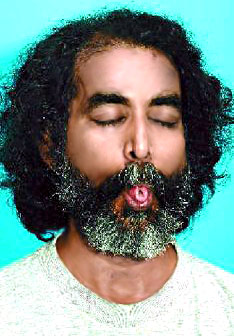 At present, a devoted Yogi practices multitudes of Pranayama, especially Sitali which involves inhalation of air through the tongue and then very slowly expel the air using both the nostrils. The name Sitali, too has a significance. In fact it has been taken from the qualities of cooling and bringing down the heat from one`s own body. It is a feminine word. The method as has been mentioned above, is followed along with certain technical know-how.
At present, a devoted Yogi practices multitudes of Pranayama, especially Sitali which involves inhalation of air through the tongue and then very slowly expel the air using both the nostrils. The name Sitali, too has a significance. In fact it has been taken from the qualities of cooling and bringing down the heat from one`s own body. It is a feminine word. The method as has been mentioned above, is followed along with certain technical know-how.
As depicted in an ancient Yoga book , namely, Sive Samhita, the exercise of this Sitali Pranayama begins with the tougue being putting forward at about three fourth of an inch. Tongue goes outside the lips. After completing this, the tongue is then doubly folded. Lengthwise it must go both outside and inside his mouth so far so as to create a kind of channel thereby making a tube like structure almost down the upper lips. This automatically enables the outer end of the tongue to make a narrow channel like slop, bending towards the tip of the tongue. With this arrangement, the tongue rightly resembles with the lower portion of the `beak` of any bird. This channel is widely utilized for breathing in air from outside. Once the inhalation finished, the tongue goes back to their normal size and shape. Lips too get closed .
As has been already discussed, the Sitali exercise generates cooling and soothing effect on the body of any exerciser. This effect is created due to the sucking of air through the mouth and not via the nostrils of the nose. Certain things however need to be kept in mind. It is always to be borne that the physiological function of the nose is intended not only for breathing and also for warming the external cool air before it enters the lungs. Due to this sometimes this Sitali exercise can prove to be very dangerous as the air that has been exhaled from outside is neither above body temperature nor far below it. Thus warm air will fail to give the cooling effect, as desired from Sitali exercise. Moreover if the air is far below the body temperature it may affect the lungs in quite adverse manner. Thus it has been advised that one needs to practice Sitali in summer seasons and that too inside a cool cell in an `Asrama`.




















